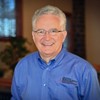- GMHC
-
Getting Started
-
Wondering where to start?
-
 We're your guide. What can this community do for you? Learn more
We're your guide. What can this community do for you? Learn more
-
-
Mobilization
-
Heed the call!
-
 Community Challenges Activate your journey to the field! Read Article
Community Challenges Activate your journey to the field! Read Article -
 Search Jobs Community Job Board Read Article
Search Jobs Community Job Board Read Article
-
-
Resources
-
Learn & Connect
-
 Upcoming Events Learn from the experts in healthcare missions & connect with others. Register Now
Upcoming Events Learn from the experts in healthcare missions & connect with others. Register Now
-
-
Community
-
Connect With the Community
-
 Member Lounge We're all in this together! Join the conversation.
Member Lounge We're all in this together! Join the conversation.
-
- Store
- Log In
Welcome to the MedicalMissions.com Podcast
This is a series of sessions from leading experts in healthcare missions.
Innovative Evidence-Based Care of Neonates
 by Mark Ralston
by Mark Ralston
of the 6.3 million children under the age of five who died in 2013, 44% (2.761 million) were neonates (defined as age 0-28 days). Over the past decade, neonatal mortality decreased at an annual rate of 2.9% compared to 4.9% in children aged 1-59 months. This smaller reduction in under-five mortality (U5M) among neonates is a significant contributor to the worldwide failure to achieve Millennium Developmental Goal 4 this year. Reducing global neonatal mortality through prevention and treatment programs in low-to-middle-income countries (LMIC), where nearly all U5M occurs, is a high priority among global child survival agendas.
HIV/AIDS Update
 by Suzie Snyder
by Suzie Snyder
Why is HIV/AIDS still a concern on the mission field? HIV prevalence and AIDS death rates have declined in many countries, yet HIV/AIDS continues to have tremendous medical, emotional, economic and social challenges. Using case presentations, this workshop will explore HIV/AIDS treatment and care drawing from the speaker’s experience in Africa.
Merging First World Quality with Third World Resources
Contemporary criticism by global health experts of much of short term medical missions activity (Dead Aid, When Helping Hurts) is valid. We have a tendency to justify use of US diagnostic and treatment guidelines in low income countries as equitable while demonstrably unreasonable and harmful. Careful consideration of the whole care process from care access to care follow-up including all costs including harms and benefits coupled with compassion leads to cost-effective, patient-centric care
Playing God and Other Ethical Issues in Medical Missions
- Allied Health
- Dental
- Healthcare Administration
- and 9 more...
There is little in the medical literature about applying the basic tenets of medical ethics in resource limited situations common in mission hospitals. For example, healthcare professionals are taught not to attempt medical or surgical interventions they have not be trained to do. That prohibition will be quickly violated when you are the only option for the patient. With real life stories and practical suggestions, this talk prepares future missionaries to serve well and ethically overseas.
Ebola Update: What We Learned in West Africa
The Ebola outbreak in West Africa not only challenged governments, NGOs, and health systems, but had ripple effects including the closure of hospitals and clinics and loss of health care workers. Over the past year, training has taken place, hospitals have reopened, and survivors are being treated. However, Liberia's Medical College remains closed (as of June 2015), and many other areas are still adversely affected. ELWA Hospital's experience shows how a Mission hospital has navigated through this crisis, and how God's aims have been furthered. .





